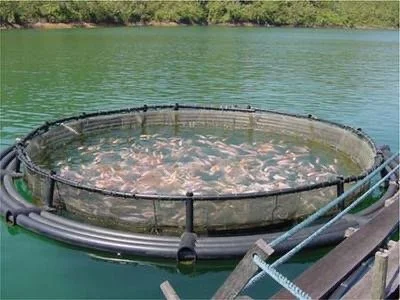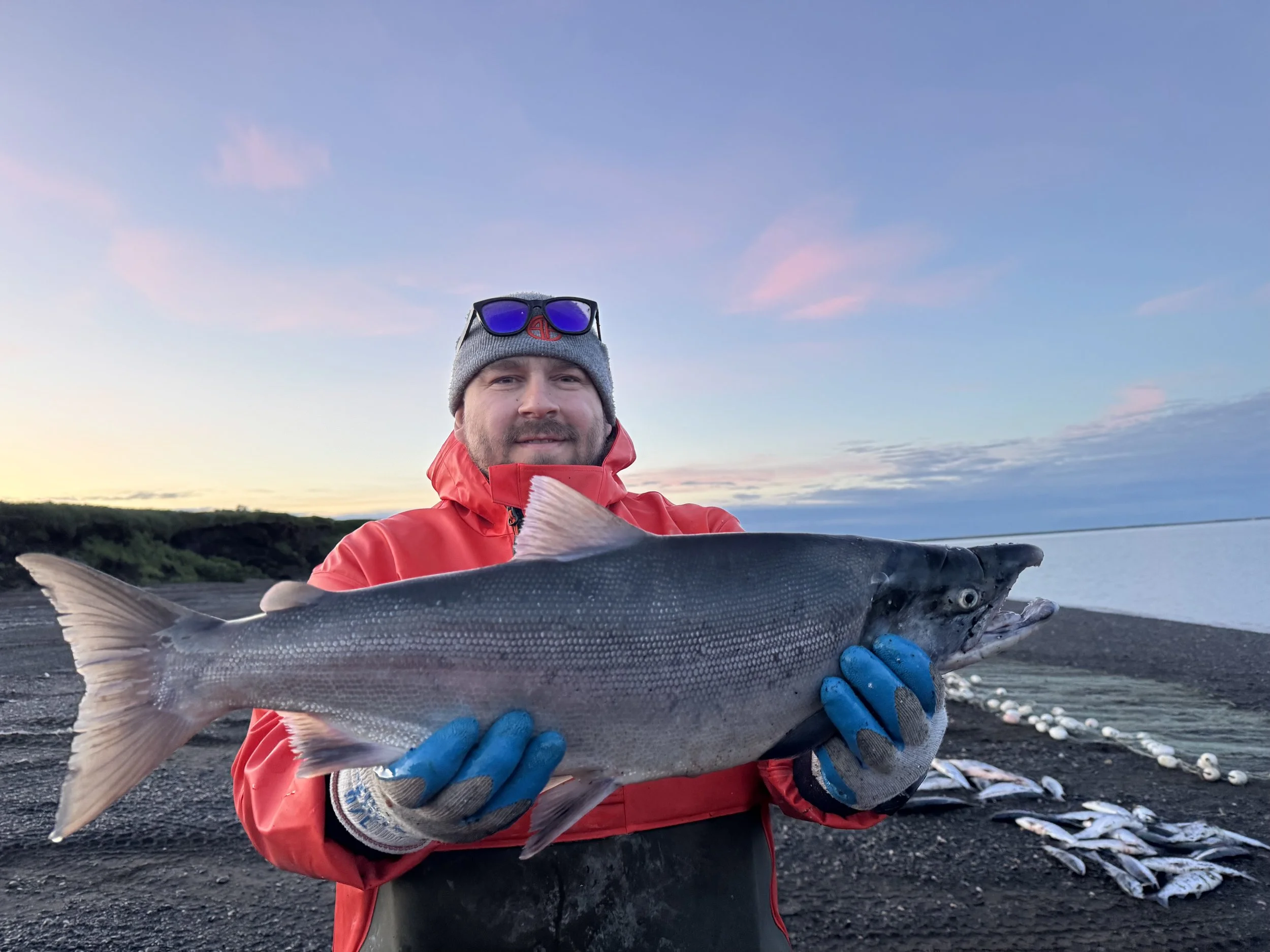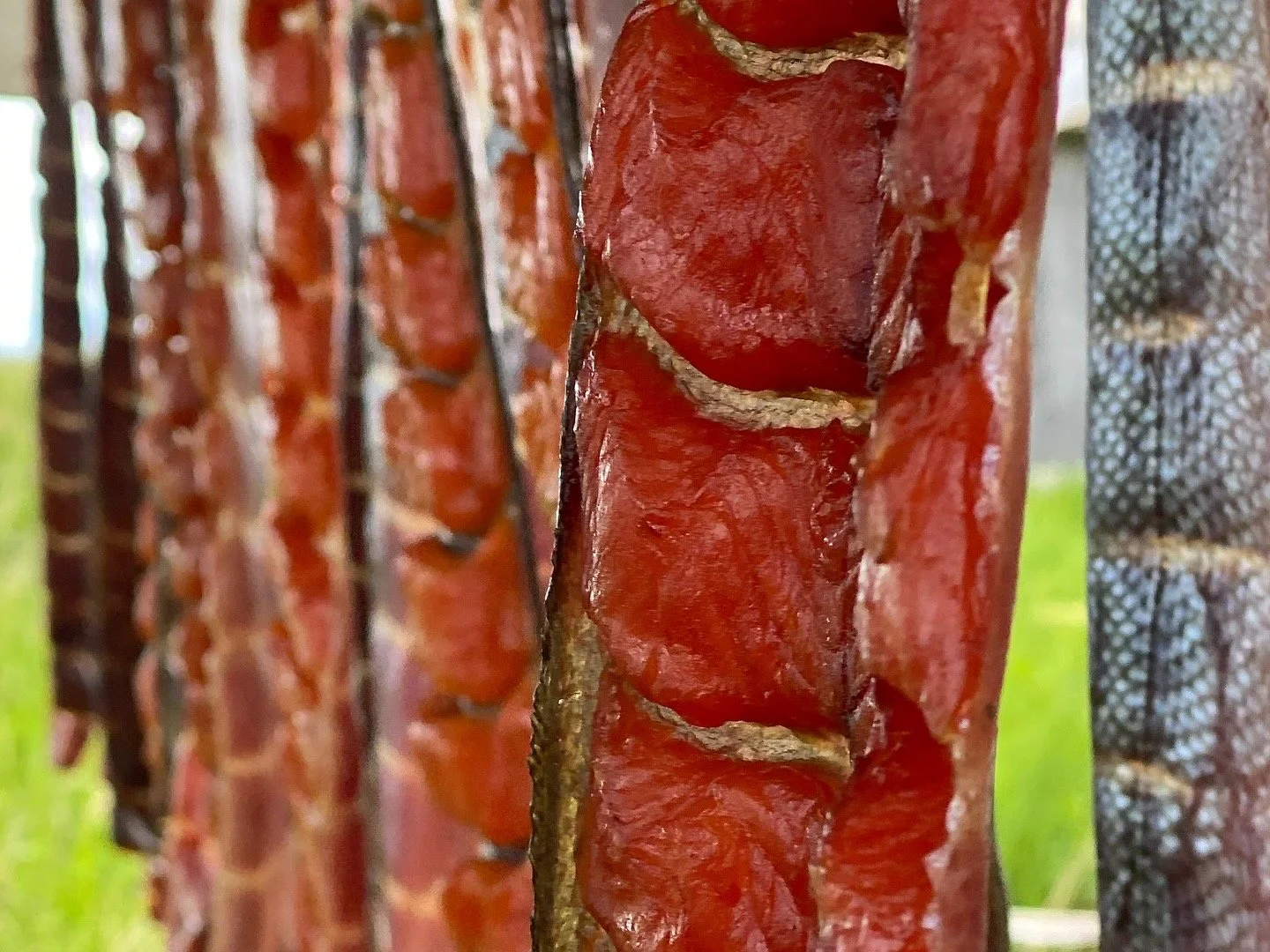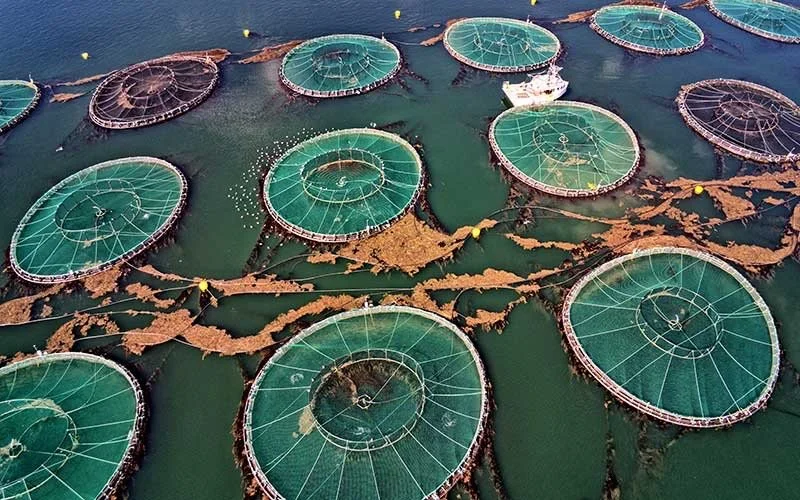
Why Wild CAUGHT Salmon ?
Discover why this fish is
leaner, richer, and impossible to copy.
-

1. Why Not Farmed Salmon?
Farmed salmon are raised in crowded open-net pens where waste, parasites, and diseases can spread quickly. Sea lice infestations are one of the biggest problems — these parasites thrive in the pens and often spread to wild salmon passing by, threatening their survival. Farmed fish are also treated with chemicals and antibiotics to manage these conditions, and escapes from pens can disrupt wild salmon genetics and ecosystems.
The environmental impact and compromised quality of farmed salmon cannot be compared to the purity of wild-caught fish.
-

2. Free, wild, untamed
Wild sockeye salmon from Bristol Bay is one of the last truly wild salmon runs on Earth. These fish are born in cold, clean rivers, spend years roaming the open ocean, and return upstream to spawn. There are no pens, no artificial feed, and no antibiotics — just nature at its best.
The result? Firm, lean meat, vibrant color, and a rich flavor you’ll never find in farmed fish.Unlike farmed fish, wild-caught salmon is seasonal, sustainable, and one of the last true flavors of the wild.
-
3. Rare & Seasonal
Unlike farmed salmon, wild sockeye can only be harvested during a short, carefully managed season — just a few weeks each summer. Our team fishes with the tide, by hand, using traditional small-scale methods.
Once the season is over, that’s it. There’s no year-round supply — making every fillet something truly special. -

4. Premium Quality, Handled with Care
Every fish is hand-picked from the nets, cleaned, filleted, and flash-frozen within hours to lock in freshness and nutrients. There are no middlemen. From Alaska to Maine, every step is personal.
You can taste the difference — pure, natural, unprocessed salmon. -

5. Nutrient Powerhouse
Wild sockeye is naturally lean, packed with Omega-3 fatty acids, high-quality protein, and essential vitamins. Its deep red color is proof of its natural diet of krill and plankton — no artificial coloring needed.
-

6. Sustainable & Regulated
Bristol Bay is the gold standard for sustainable fishing. Every harvest is regulated with strict quotas and real-time monitoring to ensure that enough fish return to spawn and keep the salmon population thriving.
CHELSEA KENDALL for CIF.ORG

